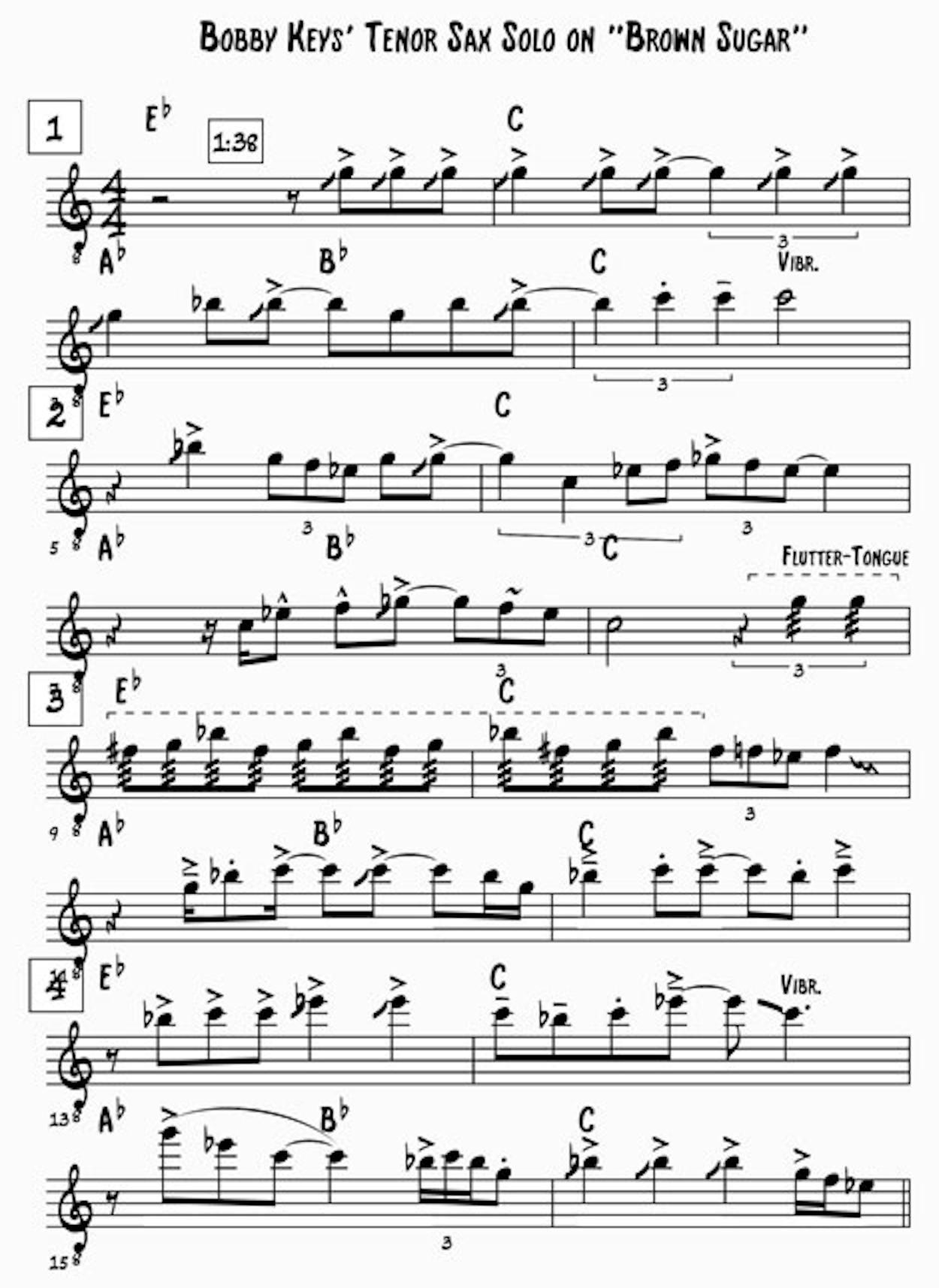Bobby Keys’ solo on the Rolling Stones’ “Brown Sugar” is one of the definitive saxophone performances in rock history. His approach to the song seems more influenced by the “down and dirty” vocabulary of blues guitarists than by the overtly virtuosic, speed-driven side of the saxophone tradition. He achieves maximum effect with relatively few notes through his raw, gutsy tone and insistent inflections. He uses repeated bends, fall-offs, intense vibrato, and a stretch of flutter tonguing to give this brief solo high impact.
The Rolling Stones performing “Brown Sugar” live in Texas, 1972.
Instead of acknowledging the passing chords of the signature guitar riff, as a jazz saxophonist would be inclined to do, Keys stays grounded in the C blues scale (C-Eb-F-F#-G-Bb-C) throughout. He achieves rhythmic balance between aggressive syncopations and lazy, behind the beat, vocal-like phrasing. While there is a moment-to moment, intuitive sensibility, he also creates a coherent shape for these famous sixteen measures as a whole.
READ MORE: Bobby Keys’s Wild Ride With the Stones
In the first four-bar cycle, Keys enters emphatically, repeating a single pitch (the fifth scale degree, G) for two measures with fast bends from below, then climbs up to the tonic, C.
Over the second four-bar cycle, he makes a longer arc, gradually descending from that high C to tonic an octave below.
For the third four-bar cycle he gears up the intensity through the use of a flutter tongue effect, reminiscent of guitar distortion, as he plays a rhythmically driving, three-note blues gesture in a “3-against-4” syncopation.
Keys hits a peak in the final four measures, climbing to the solo’s highest pitch – an altissimo G, before making a quick descent for the transition out of his lead.
The legacy of this solo has been felt by virtually every saxophonist who has since stepped onto the rock podium—from bars to concert halls to recording studios. When that particular heat is on, we reed men can’t help but hear Bobby Keys’ siren call, and our fellow musicians, producers and audiences have come to settle for nothing less.







